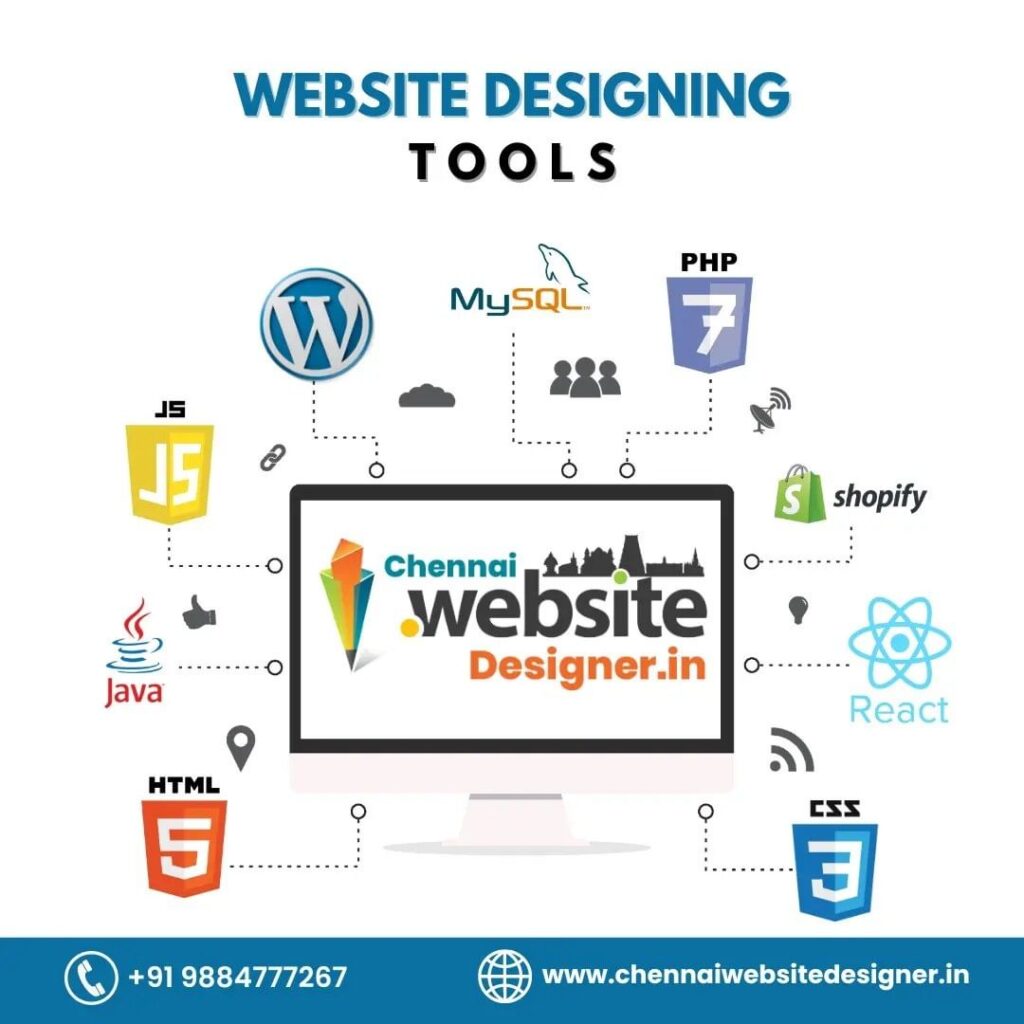Discover the secrets to successful Pay Per Click advertising with our 10 expert tips. Maximize your online marketing efforts and boost your ROI today.
What is Pay Per Click Advertising?
Pay-per-click (PPC) is a form of online advertising where advertisers pay a fee each time their ad is clicked. This model allows businesses to drive traffic to their websites by paying for visits, rather than relying solely on organic traffic. Pay Per Click advertising campaigns are typically managed through platforms like Google Ads or Bing Ads, where advertisers bid on keywords relevant to their target audience.
The Basics of Pay Per Click Advertising:
Pay Per Click Advertising is used for all types of campaign goals, including:
- Increasing sales
- Generating leads
- Promoting brand awareness
Pay-per-click advertising revolves around the concept of relevance. Individuals are actively seeking particular products, services, or information at various points in time. Advertisers possess the capability to display a tailored advertisement precisely when this search is taking place. For instance, when a user looks up “Loafer Shoes For Men,” an advertiser can present an ad specifically addressing “Loafer Shoes For Men.”
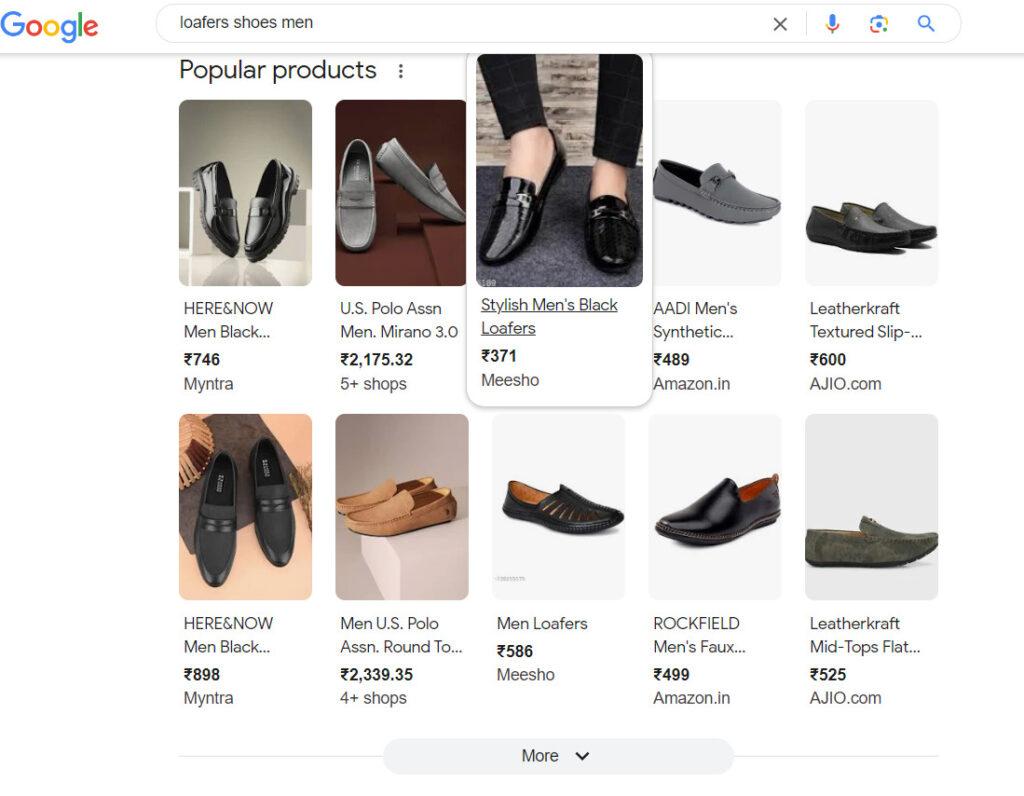
Main Platforms:
Google Ads:
Google Ads, the largest pay-per-click platform, operates on Google, Search Partner sites, and Display Network sites. Since its launch in October 2000, Google Ads has undergone numerous transformations over the past 17 years. It caters to a wide range of businesses, from small enterprises to Fortune 500 companies.
Microsoft Advertising:
Microsoft advertising, similar to Google Pay Per Click Advertising, operates as a Pay Per Click advertising platform that showcases ads on the Microsoft and Yahoo networks. It also incorporates Search Partners. Microsoft advertising is primarily focused on keyword-based advertising. In 2017, Microsoft Advertising had 137 million unique desktop searchers on the Bing Network.
Account Structure:
Campaigns and Ad Groups:
The process commences with advertisers selecting keyword themes and establishing individual campaigns. To illustrate, a Pay Per Click advertising professional may create a campaign centered around the theme “Coffee Tables”. Within this campaign, there are categorized subgroups referred to as ad groups. These ad groups may consist of:
- Oval Coffee Tables
- Long Coffee Tables
- Round Coffee Tables
Keywords:
Each keyword must be assigned a specific match type that determines the queries for which ads will be displayed. There are a total of seven match types for keywords.
Exact – The query must be entered exactly as it is, without any variations or changes.
Exact (Close Variant) – The query must be entered exactly as it is, including any misspellings or variations.
Phrase – The query must be typed in the correct order, regardless of any additional terms before or after it.
Phrase (Close Variant) – The query must be entered in the correct sequence, regardless of any extra terms preceding or following the query. The query may contain misspellings or alternative variations.
Broad – The query can be entered in any sequence and may display advertisements for related searches.
Modified Broad – The Modified Broad match type allows for queries to be entered in any sequence, as long as they include terms with a plus sign.
Broad (Session-Based) – Is a form of broad match that considers the user’s search session and takes into account other queries made by the user.
Here is a table of the match types, keywords, and potential search queries.
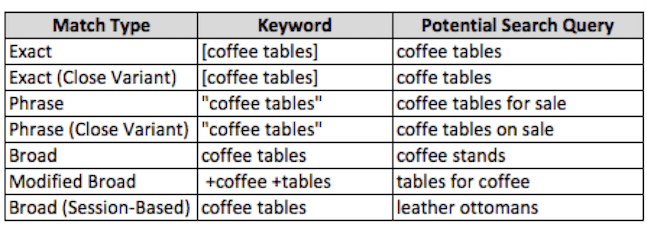
Negative Keywords:
Negative keywords can be utilized to eliminate unqualified traffic in addition to positive terms. For instance, if someone searches for “free coffee table,” they are not likely to make a purchase. By including “free” as a negative keyword, the advertiser’s ad will not be displayed when a query with this term is entered. In the case of a company selling high-end products, negative keywords such as “bargain” or “cheap” may be effective in filtering out irrelevant searches.
Audiences:
Audiences consist of categorized users and are commonly utilized in remarketing strategies. They can be tailored according to factors such as pageviews, duration of site visits, number of pages visited, and other criteria. Similar to keywords, audiences are targeted based on their relevance, with advertisers potentially bidding higher to target specific groups like shopping cart abandoners compared to homepage visitors.
Pay Per Click Advertising Copy:
Expanded Text Ads:
After creating ad groups and selecting keywords, it is time to craft the ads. The ads must incorporate the targeted keyword theme, highlight any value propositions, and include a compelling call to action.
The structure and character limits for Google Ads text ads are outlined below.
- Headline 1: Limited to 30 characters
- Headline 2: Restricted to 30 characters
- Description Line: Maximum of 80 characters
- Path 1: Up to 15 characters
- Path 2: Up to 15 characters
Advertisements must refrain from using too much capitalization, punctuation, or deceptive claims. It is important to remember that the display URL will merge the root of the final URL with Path 1 and Path 2.
It is significant to mention that both Microsoft and Google have replaced traditional Text Ads with Expanded Text Ads. Although Google Ads still allows the use of traditional ads, advertisers are no longer able to create new versions of this format. The traditional ad format included a 25-character headline and two 35-character description lines.
Every ad group should contain at least two ads for testing purposes. Here is an example of an “oval coffee tables” ad:


Ensure that your ad copy is compatible with both desktop and mobile devices by writing a single version that will be automatically adjusted for both formats. Keep in mind that the copy will be displayed on both platforms, so make sure it is optimized for both desktop and mobile users.
After clicking, visitors will be directed to a landing page that extends the advertisement’s message. This designated page, known as the landing page, will showcase a variety of oval coffee tables accompanied by information about complimentary shipping.
Product Listing Ads (PLAs):
Product titles, images, and prices are featured in square units called Product Listing Ads, which are commonly used in eCommerce Pay Per Click advertising campaigns.

Google product feeds are used by PLAs, which need to be linked to a Google Merchant Center account. On the other hand, Microsoft Advertising has a comparable feature called Product Ads, which also necessitates the use of a Bing Merchant Center account.
Image Ads:
Advertisers have the option to launch Display Network campaigns featuring image ads, which are displayed on numerous sites within and around the content of the Display Network.
- 200 × 200
- 240 × 400
- 250 × 250
- 250 × 360
- 300 × 250
- 336 × 280
- 580 × 400
- 120 × 600
- 160 × 600
- 300 × 600
- 300 × 1050
- 468 × 60
- 728 × 90
- 930 × 180
- 970 × 90
- 970 × 250
- 980 × 120
- 320 × 50
- 320 × 100
Settings:
Pay Per Click Advertising Campaign Types:
Search Network – The Search Network is the most frequently used targeting option, comprising Google.com and Google’s Search Partners like aol.com, amazon.com, and others. It primarily focuses on keyword-based Pay Per Click advertising, displaying ads when users enter relevant search queries.
Pay Per Click Advertising Display Network – The Display Network comprises numerous websites that display Google text, image, and video ads within their content. Instead of relying on traditional keyword targeting, these ads focus on audiences and demographics. For instance, a user browsing a blog about coffee table history may come across an ad related to coffee tables, increasing brand awareness even if they are not actively looking to make a purchase.
Search Network with Display Opt-In –Is a blend of both networks, replacing the Search Network with Display Select in the new Google Ads interface. By creating a standard Search Network campaign and choosing to opt in to the Display Network, advertisers allow Google to decide the optimal time and place for ad performance, relinquishing some control. While it is recommended to separate campaigns by network, experimenting with Search with Display Opt-In is advisable.
Shopping: Product Listing Ads – Google and Microsoft display Product Listing Ads (PLAs) for shopping purposes. To create shopping campaigns on Google Ads, advertisers need to submit a product feed to Google Merchant Center. Advertisers can then create product groups and bid on different feed attributes such as price, brand, and availability.
- Brand
- Category
- Condition
- Item ID
- Product Type
- Custom Attributes
Shopping campaigns do not utilize keywords; instead, search engines match user queries to the most relevant product. Therefore, it is crucial to maintain accurate information, clear titles, and descriptions for all products.
Pay Per Click Advertising Device Targeting:
Pay Per Click advertising can be shown across all devices, including:
- Desktops/Laptops
- Tablets
- Mobile Devices
Search engines treat desktops/laptops and tablets as similar platforms, applying the same bid to both. However, mobile devices have the option for bid modifiers. For instance, if the bid is $1.00 and the mobile bid modifier is set to -50%, the bid on mobile devices would be reduced to $0.50. Conversely, a bid modifier of 150% would increase the mobile bid to $1.50.
Pay Per Click Advertising Location Targeting:
PPC targeting offers a high level of granularity, reaching down to the zip code level, allowing advertisers to specify where their ads will appear. For instance, a campaign can be set up to exclusively target Iowa, ensuring ads are only shown in that specific location.

Pay Per Click Advertising Scheduling:
Advertisers can choose specific times to run ads, enabling eCommerce campaigns to run 24/7 while brick and mortar stores can display ads only during business hours, making ad scheduling a convenient way to manage when ads are shown. Bid modifiers can also be adjusted for days and hours, such as increasing bids by 20% on weekends for higher revenue or decreasing bids by -80% during low-quality traffic periods like midnight to 4 AM.
Pay Per Click Advertising Budget:
A daily budget is allocated for each individual campaign, and it is important to create budgets that align with the goals of the account.

Pay Per Click Advertising Delivery Method:
Two choices are available for ad delivery: standard and accelerated. The standard method displays ads evenly over the course of the day, suitable for advertisers with budget constraints. On the other hand, the accelerated method shows ads until the budget runs out, ideal for advertisers without budget limitations who want their ads to appear for every query.
Pay Per Click Advertising Delivery:
There are two options for which your ads will be delivered by Google:
Optimize – Delivery is based upon ads expected to produce higher click volume.
Rotate indefinitely – Ads are delivered more evenly into the ad auction, but they are not optimized toward any kind of goal like clicks or conversions.
Technical Pay Per Click Advertising:
Pay Per Click Advertising Conversion Tracking:
Advertisers possess the capability to establish conversion objectives to assess the performance of their accounts. Both platforms offer code snippets that can be inserted on crucial pages, typically order confirmation or thank you pages. Advertisers can ascertain if ad clicks are resulting in conversions.
Google Ads allows many types of conversion tracking, including:
- Webpage
- Mobile or tablet app
- Calls from ads using call extensions
- Calls to a Google forwarding number on your website
- Clicks on a number on your mobile website
- Imported goals (from third party platforms like Salesforce)
Google Analytics:
To gain insights into post click behavior, it is advisable to connect Google Ads accounts with Google Analytics accounts. This linkage offers a comprehensive view of the conversion funnel. To establish the connection, simply input the Google Ads ID number in the “Admin” section of Google Analytics.

Once added, the connection can be confirmed by navigating to “Account Settings” and then “Linked accounts.” The “View details” section will show the link.
The account can also be linked to Webmaster Tools, which will show how ads and the organic listings perform.
Google Merchant Center:
To execute Google Shopping campaigns, also known as PLAs, the Google Merchant Center account needs to be linked with Google Ads. Just like with Google Analytics, the Google Ads ID should be inputted in the “Settings” area of the Merchant Center account. The account information for Merchant Center will be displayed in the “Tools” section of Google Ads once the connection is established.
Pay Per Click Advertising Remarketing:
Establishing the Google remarketing code involves a straightforward procedure. The remarketing tag is located within the Shared Library and must be copied onto each page of the website before the closing </body> tag. To ensure accuracy, the code can be verified by revisiting the Shared Library.
Pay Per Click Advertising Extensions:
Ad extensions serve as extra links and details that provide additional information about your business, thereby enhancing the basic PPC ads. While some ad extensions can be manually selected and controlled by you, search engines may also generate certain ad extensions automatically. The primary benefit of ad extensions lies in their ability to boost the click-through-rate (CTR) of the ad headline, as they increase the size of the ads and make them more noticeable on the search engine results pages (SERPs). Numerous ad extensions are available to choose from.
Sitelink Extensions:
Sitelink extensions provide extra links for users to explore more pages on your site, and they are manually inserted in Google and Microsoft interfaces. It is important for sitelinks to be related to the search query, and they can also feature descriptions called enhanced sitelinks.
Location Extensions:
Brick and mortar businesses can greatly benefit from using location extensions. These extensions display the business address and can be utilized on both Google and Microsoft platforms. However, it is important to note that in order to use location extensions on Google, a Google My Business account must be set up and linked to Google Ads.
Call Extensions:
Advertisers have the option to utilize call extensions on both Google and Microsoft platforms, providing two different opportunities. These extensions enhance ads on mobile devices by allowing users to easily make a call with a click, making it convenient for mobile searchers to contact the business. It is important to note that call extensions are now included in Google Ads’ dynamic ad extension choices. If phone calls do not benefit your business, it may be wise to disable this feature.
App Extensions:
Google offers a useful feature called app extensions or application extensions, which is beneficial for businesses aiming to boost application downloads and user engagement.
Consumer Ratings Annotations:
Consumer rating extensions are allocated selectively to specific businesses and industries at Google’s discretion.
Seller Ratings Extensions:
Seller Ratings function akin to consumer ratings, automatically sourced by Google from reputable website reviews.
This extension considers the entire business process as well. Companies that effectively implement rating and review extensions establish procedures to regularly request feedback from customers. Search engines also implement procedures to detect fake reviews. A key aspect of this process is the natural progression of ratings. For instance, if a company were to receive fifty 5-star ratings in a single month, it would raise suspicions of potential fraudulent reviews to search engines.
Pay Per Click Advertising Tools:
PPC is an amazing field to work in. The primary goal of search engines is to maximize revenue, and as account managers, it is our responsibility to handle the spending. Search engines are motivated to keep budget managers satisfied and offer tools to justify increasing expenditure. Let’s take a look at some tools that can enhance the effectiveness of a PPC campaign.
Pay Per Click Advertising Change History:
Historical modifications are accessible in Google Ads and Microsoft Advertising, documenting previous changes such as bid adjustments and sitelink inclusions. The information contains the username or email associated with the alteration and the timestamp of the adjustment. It is possible to export the change history.
Keyword Planner:
The Keyword Planner, a feature available on Google Ads, assists in identifying and organizing campaigns, keywords, and ad groups. It also offers performance data estimates that can be utilized to determine initial bids and budgets for PPC accounts.
Display Planner:
The Display Planner serves as a valuable resource for designing Display Network campaigns. It provides a comprehensive list of websites, keywords, topics, and interests that are relevant to your target audience. By utilizing this tool, you can discover numerous new websites, apps, and video channels that are recommended for your campaign.
Pay Per Click Advertising Preview and Diagnostics:
The Ad Preview and Diagnostics tool assists in determining the reason why your ad may not appear for a specific search term, and can be accessed through the Google Ads Interface. Simply input the location and language, and the tool will analyze in the background to provide results.
Pay Per Click Advertising Opportunities:

Pay Per Click Advertising Labels:
Labels serve as virtual sticky notes and embedded documentation for campaigns, ad groups, keywords, and ads. They offer versatility, allowing for various applications such as indicating ad creation dates or identifying top-performing keywords. Labels prove particularly valuable in accounts managed by multiple individuals or when dealing with distinct segments that have different objectives. By correctly implementing labels, evaluating the performance of a particular initiative becomes significantly more streamlined.

Pay Per Click Advertising Automated Rules:
Google Ads features exclusive automated rules that can be configured based on various performance metrics and scheduled to run accordingly. These rules aim to streamline account management, yet human oversight should not be entirely replaced. It is advisable to establish performance thresholds or safety rules to address any potential decline in performance.

Pay Per Click Advertising Shared Library:
The Google Ads shared library allows advertisers to manage changes across multiple campaigns.

Audiences:
Audiences can be added to Display, Remarketing, and Remarketing Lists for Search Ads campaigns.

Pay Per Click Advertising Bid Strategies:
Automated bidding strategies, known as bid strategies, involve relinquishing control to the search engine to adjust auction bids based on preset goals. These bid goals are established in the shared library, allowing the search engine to utilize algorithms for bid adjustments. Various strategies can be implemented at both the campaign and ad group levels.
- Enhanced CPC
- Target Search Page Location
- Target CPA
- Maximize Clicks
- Target Return on Ad Spend (ROAS)
- Maximize Conversions
Pay Per Click Advertising Budgets:
In most cases, daily budgets are allocated for each campaign. However, there are instances when you may need to reallocate these funds based on campaign performance. The shared budget feature eliminates the need to manually manage and monitor individual campaign budgets. By using a shared budget, Google Ads will automatically adjust the budget for the entire account or a group of campaigns within the account.
Pay Per Click Advertising Campaign Negative Keywords:
Managing negative keywords through the shared library is a time-saving practice for adding them to multiple campaigns. Account managers often have standard lists of adult terms or industry exclusions that can be maintained in the shared library, allowing for efficient management. These lists can be applied account-wide or to specific campaigns within the account.
Pay Per Click Advertising Campaign Placement Exclusions:
Similar to negative keywords, certain websites in Display campaigns have low conversion rates. By including a list of campaign placement exclusions, this list can be shared across multiple Display campaigns.
Pay Per Click Advertising Reporting:
Pay Per Click Advertising Search Query Reports (SQRs):
Search query reports are incredibly valuable and represent a key optimization method. By running SQRs on Google and Microsoft, irrelevant search queries can be identified and added as negative keywords. Furthermore, these reports can uncover fresh ideas for expanding keywords. It is advised to conduct SQRs at least twice a month.
Pay Per Click Advertising Placement Reports:
Placement reports display the websites in the Display network where your ad has appeared. You have the option to modify bids for specific websites or block websites that are generating traffic with low conversion rates. It is recommended to conduct a placement report at least biweekly.
Pay Per Click Advertising Auction Insights Report:
This report, available in Google Ads, is utilized to identify the companies that are vying against your business in the search auctions. The Auctions Insights Report provides valuable insights into your impression share compared to your competitors, helping you decide whether to boost bids and/or budget to enhance competitiveness in the auction. Additionally, it helps in recognizing if you are competing with businesses from different industries, prompting the need to incorporate negative keywords in your campaigns or reevaluate the keywords you are bidding on.
Pay Per Click Advertising Segmentation Options:
When generating reports in search engines, you will always find the ability to segment your data further. You have the option to segment by device, time, network, and various other criteria. With numerous options available, you can achieve the level of detail you need. These segmentation features can be accessed on multiple tabs within Google Ads. Keep in mind that certain segments may only be applicable to specific subsets of data, while others can be discovered after downloading the report from the interface.
Pay Per Click Advertising Filters:
Filters are a valuable feature in both Google Ads and Microsoft Advertising, allowing users to create and save filters for efficient campaign analysis. These filters prove particularly beneficial when dealing with extensive campaigns, as they enable users to break them down into smaller, more manageable segments. By filtering based on various performance data, users can easily make bid adjustments or take other actions to align with their objectives.
Pay Per Click Advertising Columns:
Columns serve as an additional cross advertising platform element that displays predetermined metrics. They are customizable on all tabs across the engine interfaces, allowing for the inclusion of various data points like assisted conversions, competitive impression share metrics, conversion data calculations, and more. Columns provide a valuable tool for tailoring the interface to meet your specific goals and analytical requirements.
Pay Per Click Advertising Display Network:
The Display Network offers a valuable opportunity to increase traffic volume compared to search. While the average cost per click is typically lower on the Display Network, the quality of traffic may not always be as high. It is crucial to thoroughly test all targeting options within the Display Network to guarantee the arrival of high-quality traffic.
Pay Per Click Advertising Targeting Options:

Display Keywords:
Utilizing keywords on the Display Network is known as contextual targeting. These keywords align your ads with websites that share similar themes. For example, the Display keyword “shoes” will be matched with any website that Google identifies as being related to shoes. Unlike search keywords, these keywords are not interpreted literally and are all classified as broad match. Keywords within an ad group function more like a theme. Display keywords can be utilized independently or in conjunction with other targeting methods to narrow down the scope and enhance quality.
Placements:
Placements refer to the specific websites or platforms where your Display ads are displayed. You have the option to allow Google Ads to automatically select placements based on your targeting preferences, or you can manually choose the placements where your ads will appear. When you manually select placements, they are referred to as “Managed Placements.”
Topics:
Display Topics are categories that can be selected to help Google locate websites that align with those categories for displaying your ads. Topics function similarly to display keywords, but instead of creating your own keywords, you select a predefined theme. While display keywords allow for bidding at the keyword level, Topic targeting only allows for bidding at the Topic level. When analyzing Placement reports for Topic targeting, it is important to assess whether the website truly corresponds to the intended theme for the placement.
Interests:
Interests and Topics share many similarities, as they both revolve around specific themes. Nevertheless, the main distinction lies in their focus: Topics are aimed at websites, while Interests are aimed at users. Google determines user interests by analyzing browsing history or self-selected preferences when users are signed in to their Google account. This enables your ads to be displayed on any website that aligns with the interests of your target audience, regardless of the site’s content.
Demographics:
Utilizing demographic targeting enables you to adopt an audience-centric strategy for delivering ads. This feature allows you to modify bidding or restrict your audience according to factors that may influence purchase intent, such as age, gender, parental status, or household income. Gender targeting operates comparably to interest targeting, focusing on the user’s gender using data obtained from their browsing history or their self-identified gender when logged into Google. If you’re marketing a product or service that exhibits varying performance based on gender, this feature is worth testing.
Age:
Age targeting functions similarly to Gender targeting, but it focuses on the user’s age rather than their gender. It is important to be cautious when using both of these demographic targeting strategies. In certain scenarios, like a shared family computer, Google may inaccurately determine the demographics of the users.
Parental Status:
Completing the range of demographic targeting choices is the latest inclusion, known as “Parental Status”. This feature enables the targeting of users based on whether they have children, which can prove highly advantageous when promoting a product or service to parents, such as the sale of baby furniture.
Pay Per Click Advertising Options:
Responsive Ads:
Text-based promotions known as responsive ads are designed to seamlessly fit into various ad spaces. By combining text with relevant imagery, these ads can appear as native content, enhancing their effectiveness by seamlessly blending in with a publisher’s website. Additionally, the reach of these ads is maximized through dynamic adjustments to meet the specific requirements of each ad placement.
Image:
Image advertisements are considered the more conventional form of Display advertisements, as they are exclusive to this particular network. You have the option to upload your own image ads using either the interface or Google Ads Editor. It is important to note that there are various sizes of images that can be used on the Google Display Network. Before uploading, make sure to verify the file size and image resolution to prevent any potential errors.
Pay Per Click Advertising Remarketing:
Basic Remarketing:
The concept behind remarketing suggests that individuals who have previously visited your website are more inclined to make a purchase when they return. However, they may be less likely to click on your advertisement for a second time if they are not already interested in making a purchase.
Dynamic Remarketing:
In order to make use of Dynamic Remarketing, it is essential to have a Google Merchant Center. By connecting this feature to your Merchant Center data feed, you can create personalized ads using product images and details based on the products users have previously seen.
Remarketing Lists For Search Ads (RLSA):
Remarketing Lists for Search Ads (RLSA) function similarly to display remarketing by targeting previous site visitors based on their browsing behavior. Custom combinations can be created for more targeted campaigns. The key difference is that RLSAs target users through Search rather than display.
Dynamic Search Pay Per Click Advertising:
To prevent mixing up search queries, add all non-low search volume keywords currently enabled in your account as negative keywords for your Dynamic ads. Select this campaign type in the settings and ensure you create a dynamic ad type. Focus on your targets by writing targeted ad copy and adjusting bids/budgets accordingly based on categories, URLs, page titles, or page content. Exclude pages on your site that you do not want to be used for ads, such as those containing the phrase “out of stock”. Use the “+ Exclusions” button under the dynamic ad targets section of the auto targets tab.
Conclusion:
This guide provides an excellent introduction to the realm of PPC. It covers all the essential aspects you need to know when starting or delving into PPC accounts shortly after their launch. Nevertheless, the unofficial mantra of the PPC industry is “always be testing.” It is crucial to experiment with various features and strategies for your account. Each account is distinct and will respond differently to different features and strategies. While there are established best practices that generally yield positive results for most accounts, you can only truly ascertain their effectiveness through testing.
Building an effective portfolio websites is crucial for showcasing your work, skills, and accomplishments to potential clients or employers. Here’s a comprehensive tutorial to help you create a standout portfolio website:
Building an Effective Portfolio Websites:

Step 1: Define Your Objectives and Audience
- Clearly define the purpose of your portfolio websites. Are you aiming to attract clients, land a job, or simply showcase your work?
- Identify your target audience. Tailor your portfolio content and design to appeal to potential clients, employers, or industry peers.
Step 2: Choose the Right Platform For Portfolio Websites
- Consider using website builders like WordPress, Squarespace, Wix, or portfolio-specific platforms like Behance or Dribbble.
- Evaluate each platform based on factors like customization options, ease of use, pricing, and the specific needs of your portfolio.
Step 3: Select a Domain Name and Hosting
- Choose a domain name that is professional, easy to remember, and ideally reflects your name or brand.
- Select a reliable hosting provider that offers good uptime, speed, and customer support.
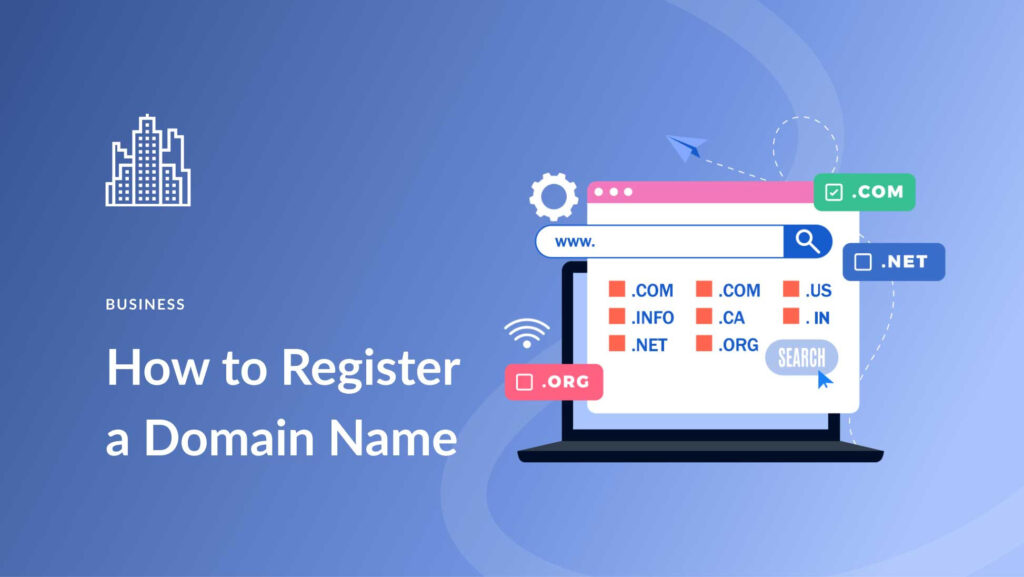
Step 4: Plan Your Website Structure
- Design a clear and intuitive navigation menu that guides visitors through your portfolio websites.
- Organize your work into categories or sections such as projects, About Me, Services, Testimonials, and Contact.

Step 5: Design a Visually Appealing Layout
- Select a clean and professional design that highlights your work without distracting from it.
- Pay attention to typography, color scheme, and overall aesthetics to create a visually cohesive experience.
- Ensure your website design is responsive and looks good on various devices and screen sizes.
Step 6: Showcase Your Best Work
- Select a curated selection of your top projects or achievements to feature prominently on your portfolio website.
- Provide detailed descriptions, images, videos, and any relevant links for each project to give visitors a comprehensive view of your work.
- Consider including case studies or project breakdowns to showcase your process and problem-solving skills.
Step 7: Craft Compelling Content
- Write an engaging About Me page that tells your story, highlights your skills, and showcases your personality.
- Use clear and concise language throughout your portfolio, focusing on the benefits and outcomes of your work.
- Incorporate client testimonials or endorsements to build credibility and trust with potential clients or employers.
Step 8: Optimize for Search Engines (SEO)
- Conduct keyword research related to your industry and include relevant keywords in your content, headings, and metadata.
- Optimize your images with descriptive alt text and ensure your website structure is crawlable by search engines.
- Submit your sitemap to search engines like Google to improve your site’s visibility.

Step 9: Make it Easy to Contact You
- Include a dedicated contact page with multiple ways for visitors to reach out to you, such as a contact form, email address, and social media links.
- Make sure your contact information is easy to find and accessible from every page of your portfolio websites.
Step 10: Test, Launch, and Promote
- Test your website thoroughly on different devices and browsers to ensure it functions properly.
- Once you’re satisfied, launch your portfolio website and promote it through your professional network, social media channels, and relevant online communities.
- Monitor your website’s performance using analytics tools and make necessary adjustments to improve its effectiveness over time.
Step 11: Maintain and Update Regularly
- Regularly update your portfolio with new projects, skills, and achievements to keep it current and relevant.
- Stay engaged with your audience by responding to inquiries promptly and actively promoting your portfolio websites through various channels.
By following these steps and putting effort into each aspect of your portfolio websites, you can create a standout online presence that effectively showcases your skills, accomplishments, and unique value proposition to potential clients or employers.
FAQ?
What are the key elements of an effective portfolio website?
- Clear Navigation
- High-Quality Content
- About Me Section
- Portfolio Section
- Contact Information
- Testimonials or Reviews
- Responsive Design
- Visual Appeal
- Call to Action (CTA)
- Blog or Insights Section (Optional)
- SEO Optimization
- Update Regularly
Discover why responsive design is crucial for Graphic Design Portfolio websites. Seamlessly adapt to any device, ensuring a smooth shopping experience for your customers.
Introduction:
Graphic design portfolio websites serve as a digital showcase for designers to display their work and attract potential clients or employers. These websites are essential for showcasing a designer’s skills, creativity, and style in a visually appealing and organized manner. By curating a portfolio website, designers can effectively communicate their expertise and experience to a wider audience, making it easier for them to stand out in a competitive industry.
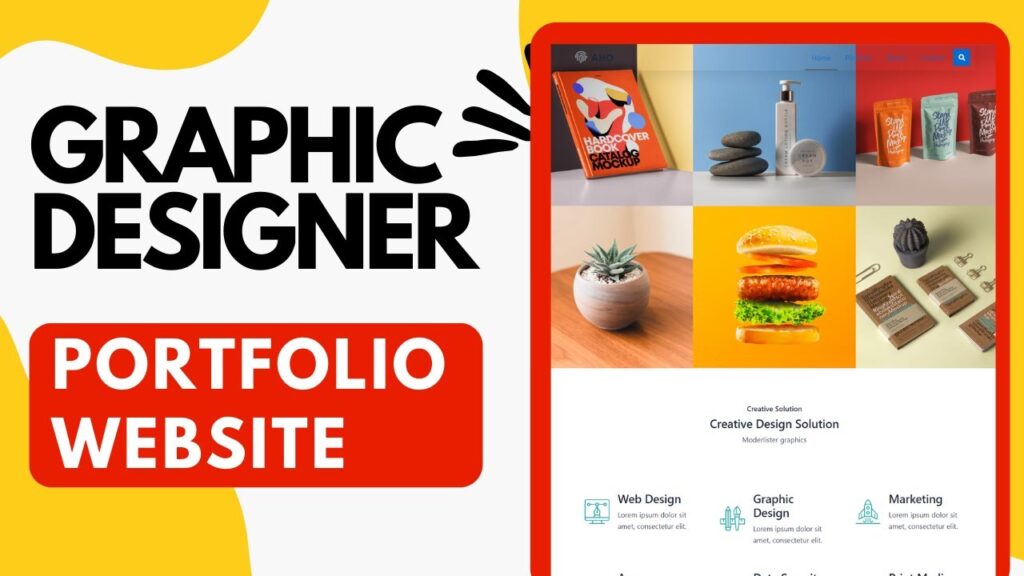
Clean and User-Friendly Layout, Graphic Design Portfolio Websites:

Graphic design portfolio websites with a clean and user-friendly layout offer a visually appealing and easy-to-navigate platform for showcasing creative work. These websites prioritize simplicity and organization, ensuring that visitors can effortlessly browse through various projects and get a clear understanding of the designer’s skills and style. By incorporating a clean design aesthetic and intuitive user interface, these portfolio websites enhance the overall user experience, allowing potential clients or employers to focus on the artwork and design expertise rather than getting lost in a cluttered or confusing interface.
The user-friendly interface enhances the overall user experience, making it more enjoyable for potential clients or employers to explore the work showcased in the portfolio.
High-Quality Visuals:

Portfolio websites for graphic design that showcase high-quality visuals are essential for professionals in the field. These websites serve as a digital representation of a designer’s work and expertise, allowing them to display their skills and creativity to potential clients or employers. By incorporating visually stunning elements, such as eye-catching images, sleek layouts, and engaging animations, these portfolio websites can captivate visitors and leave a lasting impression.
When it comes to graphic design portfolio websites, the emphasis is on presenting high-quality visuals that truly stand out. These websites act as a virtual gallery, enabling graphic designers to exhibit their best work in a visually appealing and organized manner. By carefully curating their portfolio, designers can showcase their versatility, expertise, and unique style to attract potential clients or employers.
Clear Call-to-Actions:

Portfolio websites with well-defined call-to-actions are essential for guiding visitors towards desired actions, such as contacting the designer, viewing more projects, or making a purchase. Clear call-to-actions help users navigate the website easily and understand what steps they should take next. By strategically placing buttons or links with concise and compelling messaging, designers can effectively lead visitors through the portfolio and encourage them to engage further with the content.
A thoughtfully designed portfolio website not only showcases the designer’s work but also serves as a platform for potential clients to connect and interact with the designer.
Testimonials and Client Work:

The graphic design portfolio websites showcase a collection of testimonials and client work. These websites serve as a platform for designers to display their skills and expertise through real-life projects they have completed for various clients. Testimonials from satisfied clients provide credibility and showcase the designer’s ability to meet and exceed expectations. By including client work in the portfolio, potential clients can get a glimpse of the designer’s style, creativity, and versatility in different design projects.
The testimonials and client work featured in the graphic design portfolio websites play a crucial role in attracting new clients and building trust with potential customers.
Contact Information and Social Media Links:

Graphic Design Portfolio websites provide a platform for designers to showcase their work and connect with potential clients. These websites typically include contact information and social media links to make it easier for visitors to get in touch with the designer. The contact information may include an email address, phone number, or a contact form that allows visitors to send a message directly to the designer. This ensures that anyone interested in hiring the designer or collaborating with them can easily reach out and discuss their requirements.
In addition to contact information, Graphic Design Portfolio websites also incorporate social media links to enhance the designer’s online presence. These links may direct visitors to the designer’s profiles on platforms such as Instagram, Behance, Dribbble, or LinkedIn. By including these links, designers can showcase their work to a wider audience and engage with potential clients or fellow designers.
Conclusion:

Graphic design portfolio websites play a crucial role in showcasing the talent and skills of graphic designers. These websites serve as a virtual gallery where designers can display their best work, allowing potential clients or employers to get a glimpse of their capabilities. A well-designed portfolio website not only exhibits the designer’s creativity but also demonstrates their ability to effectively communicate ideas through visual elements.
Discover why responsive design is crucial for Cool Portfolio Websites. Seamlessly adapt to any device, ensuring a smooth shopping experience for your customers.
Introduction:
Cool Portfolio websites are an essential tool for showcasing one’s work and skills to potential clients or employers. These websites serve as a digital resume, allowing individuals to highlight their best projects, accomplishments, and capabilities in a visually appealing and organized manner. A well-designed portfolio website can make a strong first impression and set a professional tone for anyone looking to establish their online presence.

Importance of Responsive Design for Cool Portfolio Websites:
Responsive design is crucial for cool portfolio websites as it ensures optimal viewing on various devices. A responsive site adapts to different screen sizes and provides a seamless user experience, leading to increased engagement and improved SEO performance. By incorporating responsive design principles, portfolio websites can effectively showcase the work of creatives and attract a wider audience. Additionally, responsive design is a key factor in enhancing site usability and fostering a positive brand image. In today’s digital landscape, having a responsive portfolio website is essential for staying competitive and relevant in the creative industry.

Benefits of Responsive Design:
- Mobile-friendly
- Flexible
- Better User Experience
- Create Content Without Any Hassle
- Improves the Loading Time
- Increases Social Media Connectivity
- Easy Maintenance
- Enhance User Visibility in Search Engines
- Reduces Duplicate Content Issues
- Lower Bounce Rates
- cool portfolio websites
Top Platform 1: Wix:

Wix is a popular website builder that allows users to create stunning websites without the need for coding knowledge. With its user-friendly interface and drag-and-drop functionality, Wix makes it easy for individuals and businesses to design and customize their online presence cool portfolio websites. From e-commerce sites to personal blogs, Wix offers a variety of templates and features to suit different needs and preferences.
Top Platform 2: Squarespace:

Squarespace is a popular website building platform that allows users to create professional-looking websites without the need for coding knowledge. With its user-friendly interface and customizable templates, Squarespace makes it easy for individuals and businesses to showcase their products or services online. From e-commerce websites to personal blogs, Squarespace offers a range of features to help users bring their online vision to life.
Top Platform 3: WordPress:
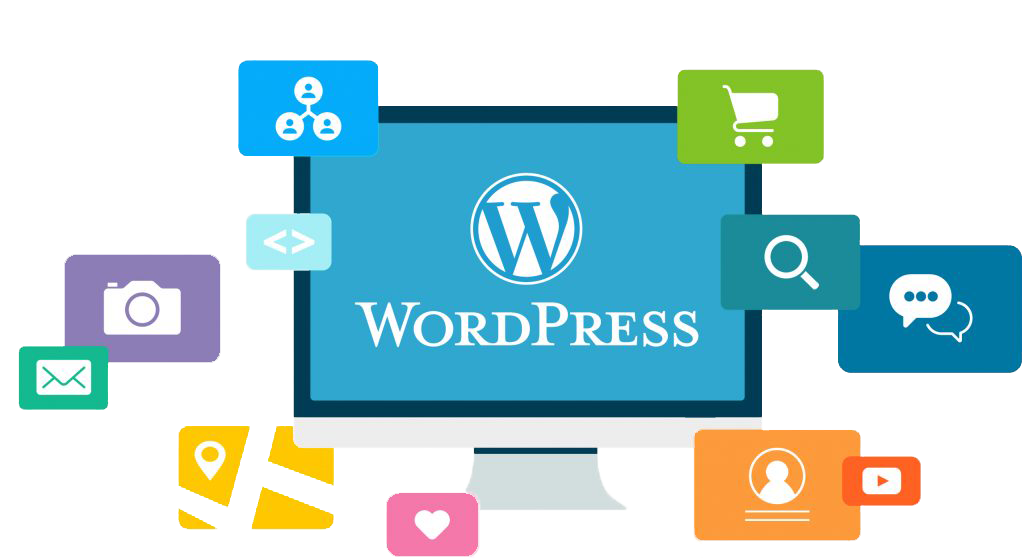
WordPress is a popular content management system that allows users to create and manage cool portfolio websiteswith ease. It offers a user-friendly interface and a wide range of customization options, making it a versatile platform for both beginners and experienced web developers. With thousands of themes and plugins available, WordPress allows users to create unique and professional-looking websites without the need for advanced coding skills.
Top Platform 4: Weebly:

Weebly is a website building platform that allows users to create and customize their own cool portfolio websites with ease. With its user-friendly interface and drag-and-drop functionality, Weebly makes it simple for individuals and businesses to design and launch professional-looking websites without any coding knowledge. Whether you’re a small business owner looking to establish an online presence or a blogger wanting to share your thoughts with the world, Weebly offers a range of customizable templates and features to suit your needs. From choosing a domain name to adding multimedia content and integrating e-commerce functionality, Weebly provides all the tools necessary to create a visually appealing and functional website.
Top Platform 5: Adobe Portfolio:
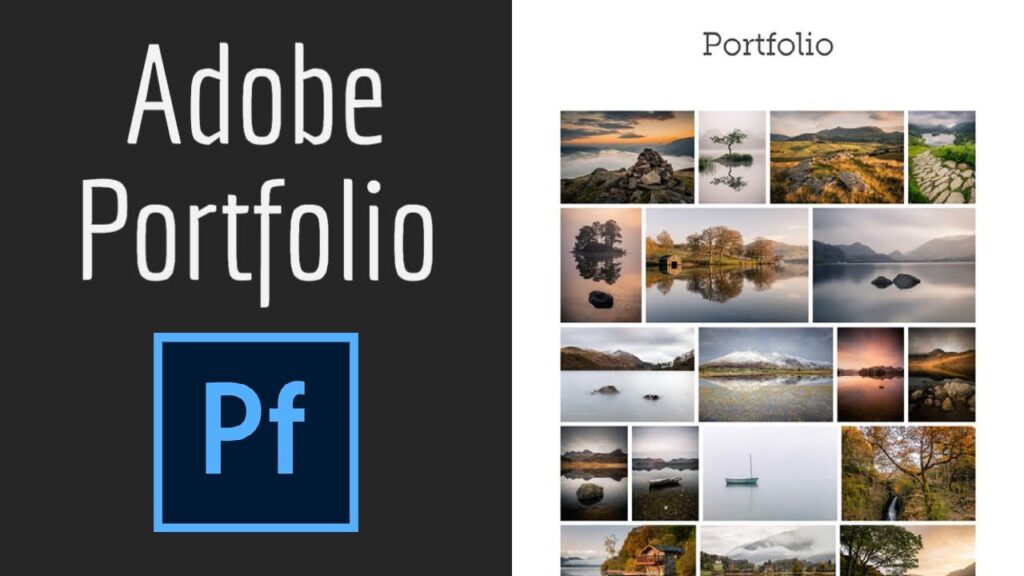
Adobe Portfolio allows users to choose from a variety of templates and layouts to best suit their style and aesthetic preferences. Additionally, it offers features such as custom domain mapping, password protection for privacy, and the ability to sync with Behance to seamlessly update projects across platforms. Whether you are a seasoned professional looking to showcase your portfolio or a student seeking to build an online presence, Adobe Portfolio provides the tools and flexibility needed to create a stunning and personalized portfolio.
Tips for Creating a Responsive Portfolio Website:

Creating a cool portfolio websites that is responsive is crucial in today’s digital age. To ensure your website looks great and functions well on all devices, consider using a responsive design framework like Bootstrap or Foundation. These frameworks will help you create a website that adapts to different screen sizes and resolutions, providing a seamless user experience for visitors on desktops, laptops, tablets, and smartphones. Additionally, optimize your images and content for fast loading times, as slow-loading websites can deter users from exploring your portfolio further.
Conclusion:
In conclusion, the cool portfolio websites is undeniably impressive. It exudes a sense of coolness and sophistication that captivates visitors from the moment they land on the homepage. The design is sleek and modern, with a seamless user interface that allows for easy navigation and exploration of the various projects showcased. The attention to detail is evident in every aspect, from the carefully chosen color palette to the thoughtfully curated content. The website not only showcases the creator’s work but also tells a story, engaging visitors and leaving a lasting impression. Overall, the portfolio website is a testament to the creator’s talent and creativity, making it a standout in the digital landscape.
Discover why responsive design is crucial for ui design success. Seamlessly adapt to any device, ensuring a smooth shopping experience for your customers.
Introduction:
UI Design, an abbreviation for user interface, serves as the intermediary between individuals and computers. Every aspect that users engage with is encompassed within the user interface, including screens, sounds, overall style, and responsiveness. When designing a UI, it is crucial to take into account these various elements. A user interface comprises four fundamental components.

UI design stands for user interface. It is the bridge between humans and computers. Anything you interact with as a user is part of the user interface. For example, screens, sounds, overall style, and responsiveness are all elements that need to be considered in UI design. A user interface involves the following four components.
1. Navigational elements: Navigational elements help users navigate an interface. Examples of navigational elements in UI include slide bars, search fields, and back arrows.
2. Input controls: On-page elements that enable users to input information are input controls. Buttons, checkboxes, and text fields are all examples of input controls.
3. Informational components: Informational components are used to communicate information to the user. A progress bar beneath a video or tutorial is an example of an informational component.
4. Containers: Containers organise content into easily digestible sections. Rather than listing every subheading underneath a tab, a container element like an accordion menu may be used to hide or show content.
Understanding Responsive Design:

Responsive design refers to the approach of designing a website or application that can adapt and adjust its layout and content based on the device it is being viewed on. Its purpose in UI design is to ensure that users have a consistent and optimal experience across different devices, such as smartphones, tablets, and desktops.
Responsive design offers several benefits for UI design. Firstly, it improves user engagement by providing a consistent and user-friendly experience across different devices. This leads to increased user satisfaction and encourages users to spend more time on the website or application. Secondly, responsive design can increase conversion rates as it allows users to easily navigate and interact with the content, leading to higher chances of completing desired actions, such as making a purchase or filling out a form.III. Key Strategies for UI Design Success.
Key Strategies for UI Design Success:
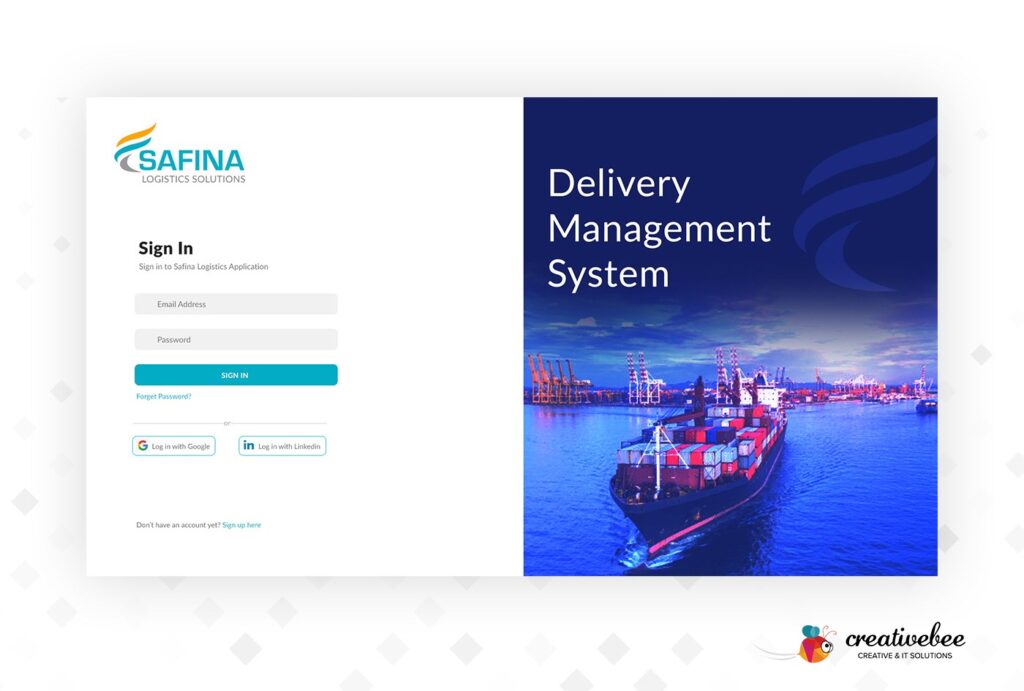
A. User-Centric Approach:
Understanding the target audience and their needs is paramount in designing successful interfaces. User research allows designers to gain insights into users’ behaviors, preferences, and pain points, enabling them to tailor products to meet specific user requirements. Creating user personas further solidifies this understanding by personifying different segments of the target audience, helping designers empathize with users and make informed design decisions. Usability testing then validates these decisions by evaluating how well users interact with the interface in real-world scenarios.
A user-centric approach ensures that interfaces are intuitive and user-friendly because it focuses on aligning design choices with user expectations and capabilities. By putting the user at the center of the design process, designers can anticipate user needs, simplify complex workflows, and remove friction points, resulting in interfaces that are easy to navigate and understand. Ultimately, prioritizing the user experience leads to higher user satisfaction, increased engagement, and ultimately, the success of the product or service.
B. Consistent Visual Language:
Establishing a consistent visual language throughout UI design is crucial for creating a cohesive and memorable user experience. Color schemes, typography, and visual elements play pivotal roles in shaping the overall aesthetic and usability of an interface. Consistency in these elements not only fosters visual harmony but also enhances brand recognition and user engagement.
Color schemes evoke emotions, convey meaning, and guide users’ attention. Consistent use of colors across different screens and elements helps maintain coherence and reinforces brand identity. Similarly, typography sets the tone of the interface, conveying the brand’s personality and ensuring readability. Consistency in font choices and styles fosters familiarity and aids in guiding users through content.
Visual elements such as icons, buttons, and illustrations serve as intuitive cues, aiding navigation and interaction. When used consistently, they establish visual patterns that users can quickly recognize and associate with specific actions or functions. This predictability enhances usability and reduces cognitive load, leading to a smoother user experience.
Overall, consistency in visual language not only strengthens brand recognition but also improves user experience by fostering familiarity, reducing confusion, and instilling trust. By adhering to established design guidelines, designers can create interfaces that are not only visually appealing but also intuitive and user-friendly, ultimately driving user engagement and satisfaction.
Strategies for Successful UI Design:
User-centered design principles are essential for creating interfaces that are both intuitive and visually appealing. By prioritizing the needs and preferences of users, designers can ensure that the interface not only looks good but also functions seamlessly. Consistency in layout, typography, color schemes, and navigation elements is crucial for maintaining coherence and guiding users through the interface intuitively. When users encounter familiar patterns and visual cues across different screens and interactions, they can navigate with ease and confidence, leading to a more positive user experience.
Prototyping, user testing, and feedback loops are integral parts of the design process that help iterate and improve interface designs. Prototyping allows designers to quickly mock up and test different design ideas, gaining valuable insights into how users interact with the interface. User testing involves observing real users as they navigate through the prototype, providing invaluable feedback on usability, clarity, and effectiveness. By incorporating user feedback into the design process through iterative cycles, designers can identify pain points, refine design elements, and ultimately create interfaces that better meet the needs and expectations of users. This iterative approach not only leads to improved usability and user satisfaction but also fosters continuous improvement and innovation in interface design.
The Role of UI Design in Ensuring a Smooth Shopping Experience:
UI design plays a pivotal role in shaping the overall shopping experience for customers, influencing their perceptions, behaviors, and ultimately, their satisfaction. A well-designed user interface can enhance the shopping journey by streamlining interactions, providing relevant information, and facilitating seamless navigation. Responsive design is instrumental in ensuring that this experience remains consistent across different devices, adapting layouts and functionalities to suit varying screen sizes and resolutions. By embracing responsive design principles, businesses can offer a cohesive shopping experience regardless of whether customers are browsing on a desktop, tablet, or smartphone, thereby maximizing accessibility and engagement.
Intuitive product browsing, an easy checkout process, and personalized recommendations are key components of a successful shopping experience. Intuitive product browsing enables customers to effortlessly explore a wide range of products, find what they need quickly, and make informed purchase decisions.
Seamless Adaptation to Any Device:
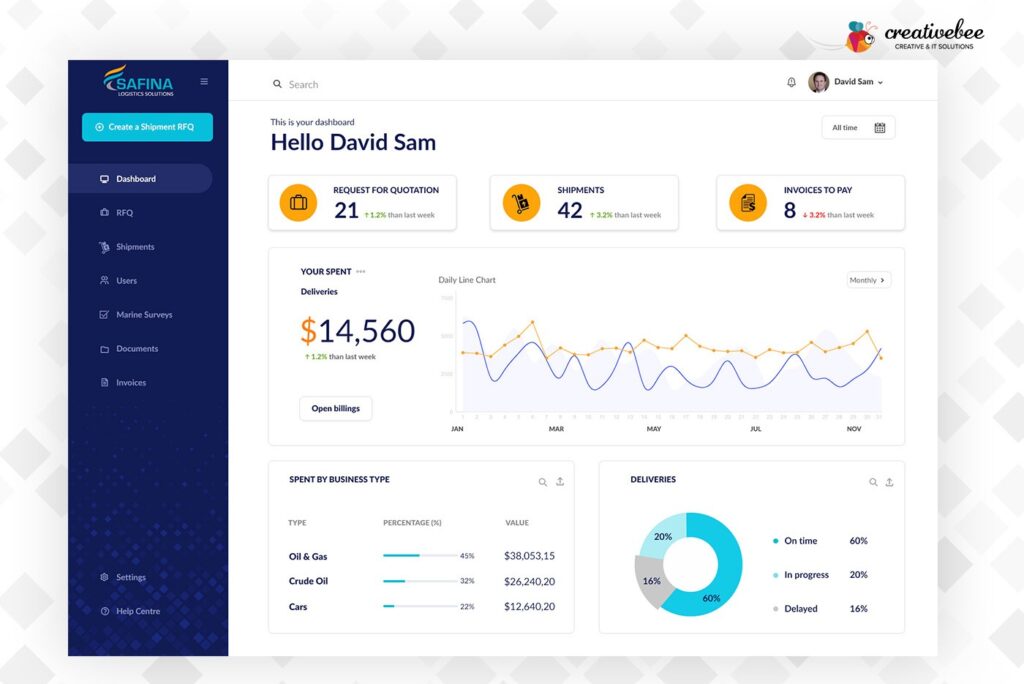
When designing UI design elements to adapt to various screen sizes and resolutions, it’s essential to prioritize flexibility and scalability. Utilize relative units such as percentages and ems rather than fixed pixel values to ensure elements can resize smoothly. Additionally, employ fluid layouts that adjust dynamically based on available screen space, allowing content to reflow and maintain readability across devices.
Optimizing images, fonts, and other assets is crucial for faster loading times on mobile devices, where bandwidth and processing power may be limited. Use compressed image formats, lazy loading techniques, and responsive image solutions to deliver the appropriate size and resolution based on the device’s capabilities. Similarly, choose web fonts wisely, prioritizing performance and readability while minimizing file sizes to expedite loading times.
Responsive breakpoints and media queries are indispensable tools in creating a responsive design that functions seamlessly across all devices. Establish breakpoints based on common device widths and orientations, adjusting layout and styling as needed to accommodate different screen sizes. Media queries allow you to tailor CSS rules based on device characteristics such as screen width, pixel density, and orientation, enabling targeted adjustments for optimal display.
Conclusion:
In conclusion, user interface UI design is a critical component of creating engaging, intuitive, and user-friendly digital experiences. By prioritizing user needs and preferences, adhering to design best practices, and leveraging responsive design principles, designers can craft interfaces that seamlessly adapt to different devices and screen sizes while maintaining visual coherence and usability. Consistency in layout, typography, color schemes, and navigation elements fosters familiarity and enhances brand recognition, contributing to a positive overall user experience. Through iterative processes such as prototyping, user testing, and feedback loops, designers can refine and improve interface designs, ensuring they meet the evolving expectations of users. Ultimately, effective UI design plays a central role in shaping the success of digital products and services, driving user satisfaction, engagement, and loyalty.
Discover why responsive design is crucial for Business Website Creator success. Seamlessly adapt to any device, ensuring a smooth shopping experience for your customers.

Introduction:
In this blog post, we will delve into the significance of establishing a robust online presence through the creation of a business website in the current digital landscape. It is crucial for businesses to have a strong online presence to reach a wider audience, increase brand visibility, and stay competitive in today’s market. Throughout this article, our main focus will be on providing beginners with a comprehensive guide on how to utilize a Business Website Creator effectively. Whether you are a small startup or an established company looking to enhance your online presence, understanding the basics of creating a business website is essential for success in the digital age.
Why Responsive Design is Crucial for Business Website Creator Success:

The concept of responsive design is crucial for the success of a business website creator as it enables websites to seamlessly adapt to any device, ensuring a smooth shopping experience for customers. Responsive design allows websites to automatically adjust their layout, content, and functionality based on the screen size and capabilities of the device being used. This means that whether a customer is accessing the website from a desktop computer, a tablet, or a smartphone, they will have a consistent and optimized browsing experience. By providing a user-friendly interface across all devices, responsive design enhances customer satisfaction and increases the chances of conversions.
In today’s mobile-driven world, having a mobile-friendly website is of utmost importance. With the increasing use of smartphones and tablets, more and more people are accessing the internet on their mobile devices. A mobile-friendly website ensures that users can easily navigate, read, and interact with the content regardless of the device they are using. It eliminates the need for users to zoom in or scroll horizontally, providing a seamless and enjoyable browsing experience. A mobile-friendly website not only improves user experience but also boosts search engine rankings, as search engines prioritize mobile-friendly websites in their results.
The Role of Responsive Design in Business Website Creator:

This approach allows businesses to provide a consistent and user-friendly experience to their customers, regardless of whether they are accessing the website from a desktop computer, tablet, or smartphone. By implementing responsive design, business website creators can optimize the website’s layout, content, and functionality to suit different devices.
This not only enhances the overall user experience but also improves the website’s visibility in search engine rankings. With the increasing use of mobile devices for internet browsing, responsive design has become a necessity for businesses to stay competitive in the digital landscape.
This flexibility and adaptability offered by responsive design empower businesses to reach a wider audience, increase customer engagement, and ultimately drive conversions and revenue.
Implementing Responsive Design in Business Website Creator:

The integration of responsive design into a business website creator is a crucial step in ensuring optimal user experience across various devices and screen sizes. By implementing responsive design, the website creator can dynamically adjust the layout, content, and functionality of the websites it generates, allowing them to adapt seamlessly to different screen resolutions and orientations. This not only enhances the accessibility and usability of the websites but also improves their search engine rankings and overall performance. With responsive design, businesses can effectively reach and engage their target audience on desktops, laptops, tablets, and smartphones, providing a consistent and user-friendly experience regardless of the device being used.
It is crucial to emphasize the significance of thoroughly testing and optimizing responsive design on various devices and browsers. By conducting comprehensive testing, developers can ensure that the website or application functions seamlessly across different screen sizes and resolutions. This is essential in providing a consistent user experience regardless of the device being used to access the content.
Additionally, optimizing the design for different browsers helps in maintaining the visual integrity and functionality of the website, ensuring that it looks and works as intended for all users. Overall, testing and optimizing responsive design is key to delivering a user-friendly and accessible digital experience.
Conclusion:

Crafting a compelling conclusion for your business website is crucial for leaving a lasting impression on your visitors. To ensure a successful conclusion, start by summarizing the key points discussed throughout your website, highlighting the main benefits and features of your products or services. This will help reinforce your message and remind your audience of the value you offer. Additionally, consider incorporating a call-to-action that encourages visitors to take the next step, whether it’s making a purchase, signing up for a newsletter, or contacting your business.
Discover why responsive design is crucial for ecommerce websites success. Seamlessly adapt to any device, ensuring a smooth shopping experience for your customers.

Introduction:
An ecommerce website is your digital storefront on the internet. It facilitates the transaction between a buyer and seller. It is the virtual space where you showcase products, and online customers make selections. Your website acts as the product shelves, sales staff, and cash register of your online business channel.
Businesses might create a branded store experience on a store like Amazon, build their own commerce site on a dedicated domain, or do it all for a multi-channel approach.

What is Ecommerce Websites Responsive Design:
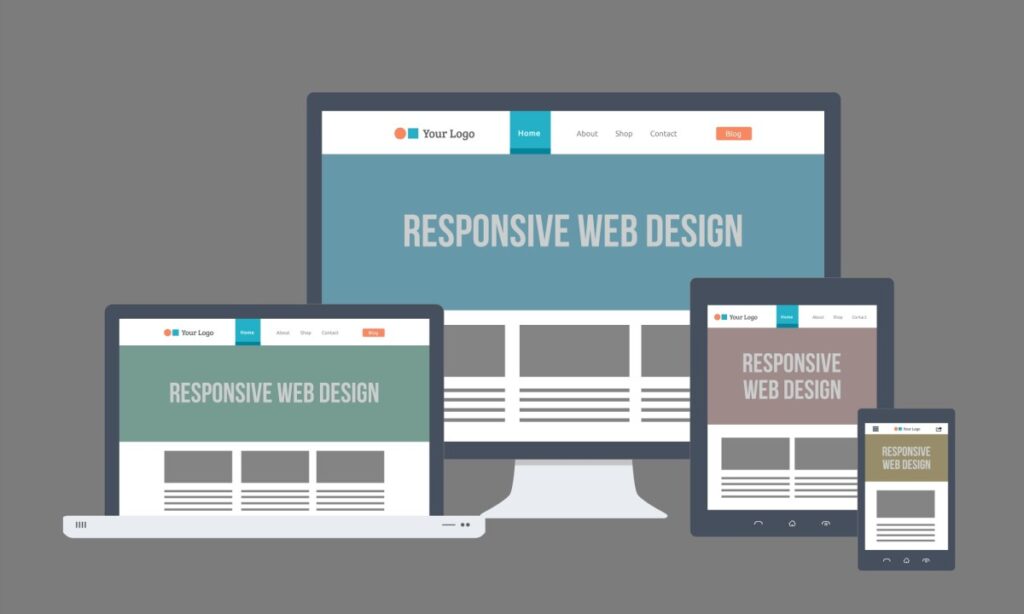
Responsive design in ecommerce websites refers to the approach of designing and developing websites that can adapt and respond to different screen sizes and devices. With the increasing use of smartphones and tablets for online shopping, it has become crucial for ecommerce websites to provide a seamless and user-friendly experience across all devices.
By utilizing responsive design techniques, websites can automatically adjust their layout, content, and images to fit the screen size of the device being used. This flexibility not only enhances user experience by providing easy navigation and readability, but also helps in maintaining a consistent brand image and message regardless of the device being used to access the website.
When it comes to ecommerce websites, having a responsive design is particularly important as it can lead to increased sales and conversions. With more and more people shopping online using their smartphones and tablets, a responsive design ensures that the website looks and functions optimally on all devices, thus reducing bounce rates and increasing customer engagement. Additionally, responsive design can improve search engine rankings, as search engines like Google prioritize mobile-friendly websites in their search results.
Importance of Responsive Design for Ecommerce Websites:
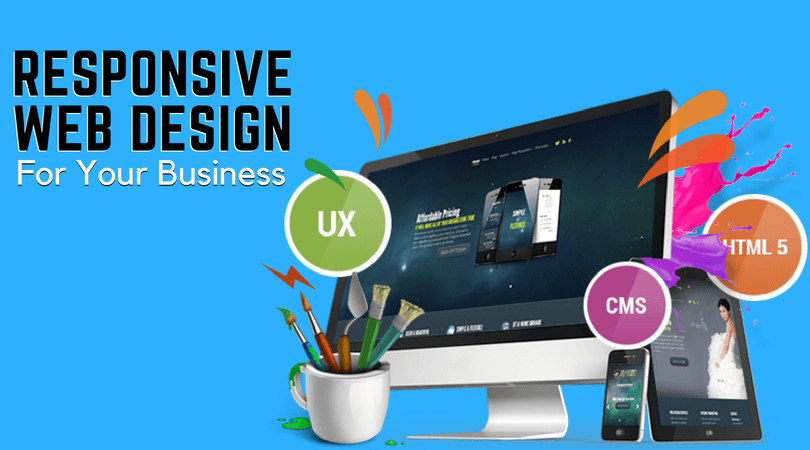
Responsive design plays a crucial role in the triumph of ecommerce websites as it can effortlessly adjust to various screen sizes and devices, guaranteeing a smooth user experience across all platforms. Through the implementation of responsive design, online businesses can improve user satisfaction by ensuring their website is user-friendly and visually captivating on any device, ultimately resulting in higher conversion rates.
Additionally, responsive design is essential for enhancing user experience through the optimization of website performance and loading times on mobile devices. As mobile shopping continues to increase in popularity, it is imperative for online businesses to focus on responsive design to meet the needs of the expanding consumer base that favors shopping on smartphones and tablets.
How Responsive Design Ensures a Smooth Shopping Experience:

Responsive design plays a crucial role in ensuring that ecommerce websites can seamlessly adapt to any device, whether it be a desktop computer, tablet, or smartphone. By utilizing responsive design techniques, websites are able to automatically adjust their layout and content to fit the screen size and resolution of the device being used. This not only enhances the user experience by providing a consistent and optimized shopping experience, but also helps to improve conversion rates and overall customer satisfaction.
Providing a consistent shopping experience across all devices is essential for ecommerce websites looking to attract and retain customers. In today’s digital age, consumers expect to be able to browse and make purchases on the go, regardless of the device they are using. By implementing responsive design, websites can ensure that customers have a seamless shopping experience no matter where they are or what device they are using. This consistency helps to build trust and loyalty with customers, ultimately leading to increased sales and revenue for the business.
There are several successful ecommerce websites that have effectively implemented responsive design to provide a seamless shopping experience across all devices. One example is Amazon, which has optimized its website to work flawlessly on both desktop and mobile devices. Another example is ASOS, a popular online fashion retailer, which has a responsive website that adapts to different screen sizes and resolutions.
Conclusion:

In conclusion, it is crucial to emphasize the significance of responsive design for ecommerce websites. Responsive design ensures that websites are optimized for various devices, providing a seamless user experience across desktops, tablets, and smartphones.This adaptability is essential in today’s digital landscape where consumers access online stores through a multitude of devices. By prioritizing responsive design, ecommerce websites can enhance user engagement, increase conversions, and ultimately drive business growth.
Discover the Expert Tips For Creating for creating a thriving build a website. Learn the strategies and techniques to build a successful online presence.

Introduction:
Constructing a thriving build a website can bring about numerous advantages for individuals and businesses alike. One key benefit is the ability to reach a wider audience, as a well-designed website can attract visitors from all around the world. This increased visibility can lead to greater brand recognition and potentially more customers or clients. Additionally, having a successful website can help establish credibility and professionalism, as it shows that a business is up-to-date with technology and committed to providing a positive user experience.

Understanding the Basics of Build A Website:
Choosing the right domain name and hosting provider:
Selecting the appropriate domain name and hosting provider build a website is a crucial decision when establishing an online presence. The domain name serves as the unique address for your website, making it essential to choose a name that is easy to remember, relevant to your brand, and reflects the nature of your business. It is important to conduct thorough research to ensure that the domain name you select is not already in use or trademarked by another entity. Additionally, opting for a reputable hosting provider is essential to ensure that your website remains accessible, secure, and performs optimally. Factors to consider when choosing a hosting provider include uptime guarantees, customer support, storage capacity, bandwidth limits, and scalability options.
Selecting a suitable website builder or content management system (CMS):
When it comes to choosing the right website builder or content management system (CMS), it is crucial to carefully consider your options. The selection process involves evaluating various factors such as your specific needs, budget, and technical expertise.
Firstly, you need to assess your requirements and determine what features and functionalities are essential for your website. Consider whether you need e-commerce capabilities, a blog section, or integration with third-party tools. This will help you narrow down your choices and find a website builder or CMS that aligns with your goals.
Secondly, it is important to consider your budget. Some website builders offer free plans with limited features, while others require a subscription or one-time payment. Evaluate your financial resources and choose a platform that not only fits your budget but also provides the necessary tools and support for your website.
Lastly, consider your technical expertise or the resources available to manage your website. Some website builders are user-friendly and require no coding knowledge, making them suitable for beginners. On the other hand, certain CMS platforms offer more flexibility and customization options but may require technical skills or the assistance of a developer.
By carefully evaluating your needs, budget, and technical expertise, you can make an informed decision when selecting a suitable website builder or CMS for your project.
Planning the website structure and navigation:
Designing the layout and organization of the website, as well as determining how users will navigate through the different pages and sections, is a crucial step in the development process. This involves creating a clear hierarchy of information, deciding on the placement of menus and links, and ensuring that the overall structure is intuitive and user-friendly. By carefully planning the website structure and navigation, developers can help users easily find the information they are looking for and enhance their overall browsing experience build a website.
Designing an Engaging and User-Friendly Website:

Importance of a visually appealing and professional design:
A visually appealing and professional design build a website plays a crucial role in capturing the attention of the target audience and leaving a lasting impression. It helps to establish credibility and trust with potential customers, as a well-designed website or product is often perceived as more reliable and reputable. Aesthetically pleasing designs can also enhance user experience, making it easier for visitors to navigate and engage with the content. In today’s competitive market, having a visually appealing and professional design can set a business apart from its competitors and attract more customersbuild a website.
Tips for creating a responsive and mobile-friendly website:
Creating a website that is both responsive and mobile-friendly is crucial in today’s digital landscape. With the increasing use of smartphones and tablets, it is essential to ensure that your website can adapt to different screen sizes and resolutions.
Best practices for organizing content and using clear call-to-actions:
Effective strategies for structuring information and implementing concise prompts are essential for engaging audiences and driving desired actions. build a website employing proven methods for arranging content and crafting compelling calls-to-action, businesses can enhance user experience and increase conversion rates.
Optimizing the Website for Search Engines:

Importance of search engine optimization (SEO) for better visibility:
Search engine optimization (SEO) plays a crucial role in enhancing the visibility of a build a website or online content. By implementing effective SEO strategies, businesses can improve their rankings on search engine result pages (SERPs), making it easier for potential customers to find them.
Techniques for keyword research and on-page optimization:
In the realm of digital marketing, keyword research and on-page optimization play a vital role in driving organic traffic and improving search engine rankings. To enhance these techniques, it is essential to stay updated with the latest trends and best practices in the field.
Strategies for building quality backlinks and improving website authority:
Enhancing website authority and establishing a strong foundation of quality backlinks are crucial strategies for optimizing your online presence. By focusing on building high-quality backlinks, you can significantly improve your website’s credibility and visibility in search engine rankings.
Enhancing User Experience and Website Performance:

Importance of fast loading speed and smooth navigation:
The significance of having a fast loading speed and seamless navigation on a build a website cannot be overstated. Fast loading speed is crucial as it directly impacts user experience. Research has shown that users tend to abandon websites that take too long to load, leading to high bounce rates and loss of potential customers. In today’s fast-paced digital world, users expect instant gratification and are not willing to wait for a slow website to load.
Tips for optimizing images and reducing file sizes:
Strategies for optimizing images and minimizing file sizes can greatly enhance the performance and user experience of a website or application. One effective approach is to resize the images to the appropriate dimensions before uploading them. This ensures that the images are not unnecessarily large and helps to reduce the file size. Additionally, using image compression techniques can further optimize the images without compromising their quality.
Integrating Social Media and Online Marketing:

Utilizing social media platforms to promote the website:
Leveraging various social media platforms to enhance the visibility and reach of the website is a strategic approach to increasing online presence and driving traffic. By utilizing platforms such as Facebook, Instagram, Twitter, and LinkedIn, businesses can engage with a wider audience, share valuable content, and ultimately attract more visitors to their website. Through targeted advertising, engaging posts, and interactive content, companies can effectively promote their website and attract potential customers.
Tips for effective email marketing and lead generation:
Enhancing your email marketing strategies and optimizing lead generation efforts are crucial components of a successful digital marketing campaign. build a website By focusing on creating engaging and personalized content, you can increase open rates and click-through rates, ultimately driving more conversions. Utilizing segmentation and targeting techniques can help you tailor your messages to specific audience segments, increasing the relevance and effectiveness of your emails.
Monitoring and Analyzing Website Performance:

Importance of tracking website analytics and user behavior:
Monitoring website analytics and user behavior is crucial for any online business or organization. By tracking metrics build a website such as website traffic, page views, bounce rates, and conversion rates, businesses can gain valuable insights into the effectiveness of their online presence. Understanding how users interact with a website can help identify areas for improvement, optimize user experience, and ultimately increase conversions and revenue.
Tools and techniques for monitoring website performance:
Monitoring the performance of build a website involves utilizing a variety of tools and techniques to ensure that the site is running smoothly and efficiently. One common tool used for monitoring build a website performance is Google Analytics, which provides valuable insights into website traffic, user behavior, and other key metrics.

Conclusion:
In conclusion, the process of build a website is a crucial step in establishing an online presence for individuals and businesses alike. It provides a platform to showcase products, services, or personal portfolios to a global audience. The website creation process involves several key steps, including planning, design, development, and deployment.
Designing a professional website involves a combination of creativity, technical skills, and strategic thinking. Here are 10 essential tips to guide you through the process:
Introduction:
A well-designed and Professional website is crucial for making a positive first impression in the online world.

Defining your target audience and goals:
professional website Setting specific and measurable goals is equally important in guiding your marketing efforts. Whether your goal is to increase brand awareness, drive website traffic, or generate leads, having clear objectives will help you stay focused and track your progress. By establishing realistic and achievable goals, you can measure the success of your marketing campaigns and make informed decisions on how to optimize your strategies for better results.
Understanding the importance of professional website design:
Professional website design goes beyond just visual appeal; it also focuses on creating a seamless user experience. A user-friendly interface, intuitive navigation, and fast loading times are essential elements that contribute to a positive user experience. A well-designed website ensures that visitors can easily find the information they are looking for and navigate through the site effortlessly. This, in turn, leads to higher customer satisfaction and encourages repeat visits.

Choosing the right color scheme and typography:
Selecting the appropriate color scheme and typography is a crucial aspect of any design project. The color scheme sets the overall mood and tone of the design, professional website while typography enhances the readability and visual appeal of the content. It is essential to carefully consider these elements to create a visually cohesive and aesthetically pleasing design.
Creating a user-friendly navigation system:
A user-friendly navigation system should prioritize simplicity and efficiency, allowing users to navigate through the platform seamlessly. This can be achieved by minimizing the number of clicks required to access different sections, implementing search functionality for quick information retrieval, and optimizing the layout for different devices and screen sizes. By streamlining the navigation process, users can focus on their tasks or goals without being hindered by complex or cumbersome menus.

Optimizing for mobile responsiveness:
Enhancing mobile responsiveness for optimal performance. Mobile responsiveness is a crucial aspect of website optimization in today’s digital landscape. With the increasing number of users accessing websites through mobile devices, it is imperative to ensure that websites are optimized for seamless mobile experiences. By enhancing mobile responsiveness, websites can adapt to different screen sizes, resolutions, and orientations, providing users with a consistent and user-friendly interface regardless of the device they are using. This optimization process involves various techniques such as responsive design, fluid layouts, and flexible images, all aimed at delivering a smooth and visually appealing experience on mobile devices.

Incorporating high-quality images and multimedia:
Enriching content with top-tier visuals and multimedia integration. Enriching content with top-tier visuals and multimedia integration is a key strategy to create compelling and impactful materials. By incorporating high-quality images and multimedia elements, the content becomes visually stunning and more engaging for the audience. These visuals not only serve to enhance the aesthetic appeal but also convey information in a more comprehensive and memorable manner. By seamlessly integrating multimedia elements, such as videos, audio clips, and interactive features, the content becomes more dynamic and interactive, allowing the audience to actively participate and immerse themselves in the material.
Implementing SEO best practices:
In addition to keyword optimization, implementing SEO best practices also involves optimizing website structure and navigation. This includes ensuring that the website is mobile-friendly, as mobile responsiveness is now a key ranking factor for search engines. It also involves optimizing page load speed, as slow-loading websites can negatively impact user experience and search engine rankings. By improving website structure and navigation, businesses can enhance user experience and make it easier for search engine crawlers to index and understand their website content.
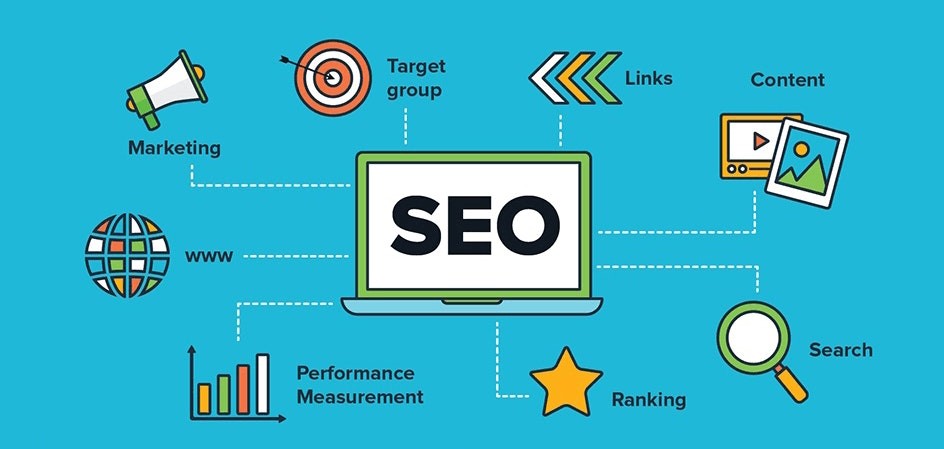
Testing and refining your website design:
Testing and refining your website design is an essential step in ensuring its success. By conducting thorough testing, you can identify any potential issues or areas for improvement, allowing you to refine and optimize your design. This process involves evaluating various aspects of your website, such as its layout, navigation, functionality, and overall user experience.

Conclusion:
In conclusion, a professional website plays a crucial role in establishing a strong online presence for a business or individual. It serves as a digital storefront that can help attract new customers, build brand awareness, and showcase expertise in a particular field. By investing in a well-designed professional website, businesses can effectively communicate their value proposition, establish trust with potential customers, and ultimately drive growth and success in the digital marketplace.
As of March 5, 2024, websites made with Google Business Profiles are no longer available and customers that visit your site will be redirected to your Business Profile instead. Learn how to find your profile. Your customers will only be redirected to your Business Profile until June 10, 2024.
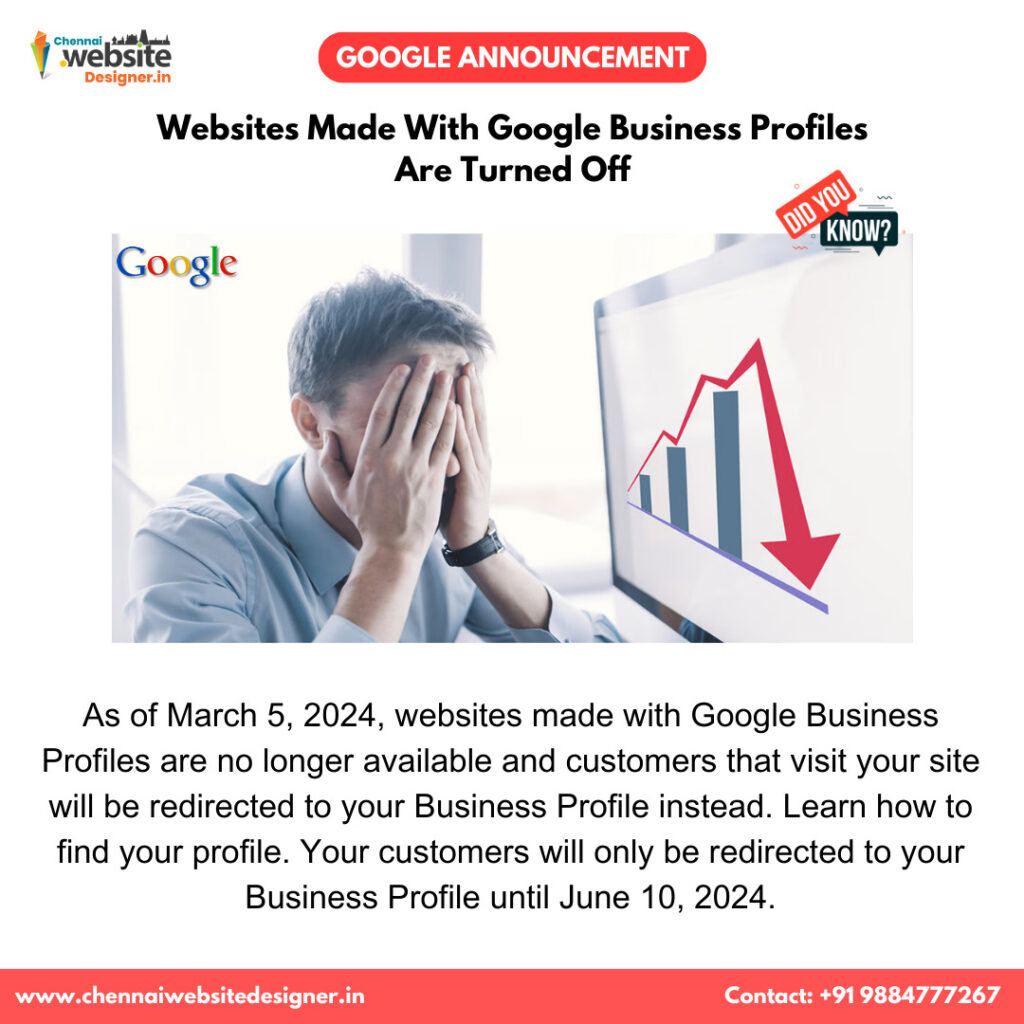
After that, customers will get a “Page not found” error when they try to visit your website. If you’d like to continue to have a website for your business, you can create a new website with other tools. Then, update your Business Profile with the new website address.
Tips:
- Domains that end with business.site and negocio.site have been removed from the website field on your Business Profile. We recommend you update your Google Business Profile with a new website.
- Other than that, your Business Profiles aren’t affected.
- If you don’t have a website made with a Google Business Profile, the changes mentioned in this article won’t impact you.
As a reminder, your Business Profile is a great place to:
- Showcase your business
- Share important information, updates, and links to other social platforms
- Use photos to attract customers
- Let customers know how to contact you through messages or by adding your phone number.
Build New Google Business Website With Chennai-Website-Designer:

OUR SERVICES:

- Website Design.
- ecommerce website design.
- woocommerce website design.
- shopify website design.
- Joomla website design.
- Branding design service.
- logo design.
- brochure design.
- business card design.
- PPT design.
- SEO
- SEM
- SMO


